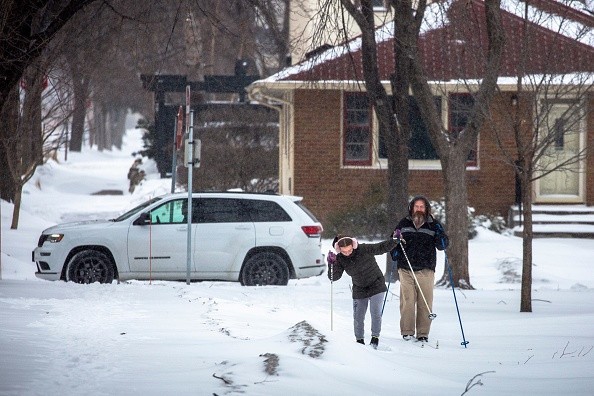Showers and storms have reappeared in the east coast of the United States, and the wet weather is not forcasted to let up until the end of the week.
Meanwhile, storm activity in the west has been creating havoc, along with a low-intensity heatwave.
Since Friday, lightning strikes have caused more than 40 fires in southwest Western Australia, according to the Bureau of Meteorology (BoM).
Severe winter storm weather will experience in southern and eastern states

Severe thunderstorms with destructive winds, hail and a few tornadoes are likely in southern states such as Texas, Oklahoma, and Louisiana, as per ABC News.
This storm will sweep over the South in the coming days, bringing heavy rain and the danger of further severe weather.
Meanwhile, many storms will continue to travel through the West, bringing heavy rainfall from Washington to Northern California.
The San Francisco Bay Area might get some much-needed rain Monday night and Tuesday early.
Heavy snow is forecast in areas of the Washington region, with a few inches falling in the Sierra Nevada Mountains.
According to a Hazardous Weather Outlook published by the NWS on Monday, some thunderstorms coming to the state later this afternoon would most likely be severe, with big hail and destructive winds being the principal threats, via the Texarkana Gazette.
A single tornado cannot be ruled out and it will continue to be a secondary hazard.
While the worst of the storms should pass by midnight, heavy storms may persist through Southern Arkansas and Northeast Louisiana until Tuesday morning.
According to the statement, a few of these may also be serious.
Wildfires will come to Central Texas and Southern California

Wildfires are being fanned by the wind and dry weather from Southern California to Texas ahead of the western storms.
More than 100 firefighters fought a brush fire from the air and the ground in the Hansen Dam Recreation Area near Pacoima, California, on Sunday night.
Within 10 p.m., the fire had escalated to the "Major Emergency" level.
According to the Los Angeles Fire Department, personnel looked to have the upper hand just after 11 p.m. with a highly coordinated air attack paired with a persistent ground-based onslaught using firefighting hand lines and hand tools.
Authorities said that firefighters were able to restrict the Hansen Fire to four acres.
Throughout the night, crew continued to work the perimeter of the fire with hose lines, hand tools, and heavy machinery to extinguish hot areas.
While in Texas as per Austin American-Statesman, a planned burn that erupted out of hand in Bastrop County earlier this year served as a terrifying warning that Central Texas is extremely vulnerable to catastrophic wildfires.
State officials are now rethinking their strategy for fighting fire with fire.
The Texas Parks and Wildlife Department's stricter standards for controlled burns, which were implemented last week, make sense.
Fire scientists and professionals warned that the Austin area is becoming increasingly prone to the types of wildfires that devastated cities in California, Oregon, Arizona, and other states last year.
Texas is second only to California in terms of the number of properties threatened by wildfires, with counties in Central Texas accounting for the majority of our state's affected inventory.
The Texas Parks and Wildlife Department was acting proactively and within current procedures last January 18 when it began a planned burn at Bastrop State Park to remove thick vegetation that may make a wildfire more difficult to manage.
Unfortunately, the intended 150-acre burn turned into a terrifying 812-acre wildfire before being extinguished, most likely owing to embers drifting in the wind.
© 2025 NatureWorldNews.com All rights reserved. Do not reproduce without permission.





